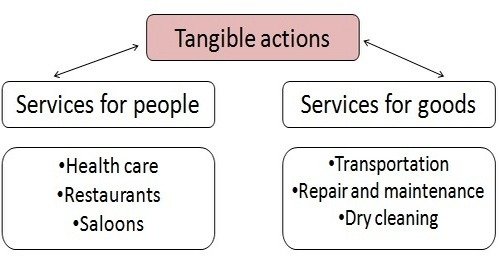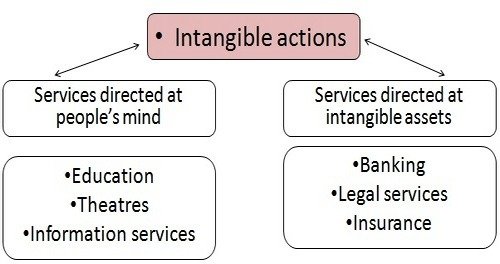Classification of Services
06/03/2020In order to be able to make a clear and relevant classification of services, we would first need to understand the concept of the word itself. Services usually refer to processes and not physical products. To understand more, read this article on difference between goods and services. Some services may include people whereas other services (like online services) may including objects which are managed by people.
Examples of services which include people can be a hair salon, education, theater, restaurants, and public transportation. On the other hand services that include objects include repairs and maintenance, dry cleaning, banking, legal services, insurance, etc.
- Classification of service based on Tangible Action

Wherever people or products are involved directly, the service classification can be done based on tangibility.
(i) Services for people: Like Health care, restaurants and saloons, where the service is delivered by people to people.
(ii) Services for goods: Like transportation, repair and maintenance and others. Where services are given by people for objects or goods.
- Classification of services based on Intangibility

There are objects in this world which cannot be tangibly quantified. For example the number of algorithms it takes to execute your banking order correctly, or the value of your life which is forecasted by insurance agents. These services are classified on the basis of intangibility.
(i) Services directed at people’s mind: Services sold through influencing the creativity of humans are classified on the basis of intangibility.
(ii) Services directed at intangible assets: Banking, legal services, and insurance services are some of the services most difficult to price and quantify.
The most intangible form of service output is represented by information processing. The customer’s involvement in this type is service is not required. Generally, customers have a personal desire to meet face to face but there is no actual need in terms of the operational process. Consultancy services can be an example of this type of services where the relationship can be built or sustained on trust or telephone contact. However, it is more indicated to have a face-to-face relationship in order to fully understand the needs of the customer.
A more general classification of services based on the type of function that is provided through them can be as follows:
- Business services.
- Communication services.
- Construction and related engineering services.
- Distribution services.
- Educational services.
- Environmental services.
- Financial services.
- Health-related and social services.
- Tourism and travel-related services.
- Recreational, cultural, and sporting services.
- Transport services.
- Other services not included elsewhere.
7 Important Characteristics of Services
(i) Perish-Ability
Service is highly perishable and time element has great significance in service marketing. Service if not used in time is lost forever. Service cannot stored.
(ii) Fluctuating Demand
Service demand has high degree of fluctuations. The changes in demand can be seasonal or by weeks, days or even hours. Most of the services have peak demand in peak hours, normal demand and low demand on off-period time.
(iii) Intangibility
Unlike product, service cannot be touched or sensed, tested or felt before they are availed. A service is an abstract phenomenon.
(iv) Inseparability
Personal service cannot be separated from the individual and some personalised services are created and consumed simultaneously.
For example hair cut is not possible without the presence of an individual. A doctor can only treat when his patient is present.
(v) Heterogeneity
The features of service by a provider cannot be uniform or standardised. A Doctor can charge much higher fee to a rich client and take much low from a poor patient.
(vi) Pricing of Services
Pricing decision about services are influenced by perish-ability, fluctuation in demand and inseparability. Quality of a service cannot be carefully standardised. Pricing of services is dependent on demand and competition where variable pricing may be used.
(vii) Service quality is not statistically measurable
It is defined in form of reliability, responsiveness, empathy and assurance all of which are in control of employee’s direction interacting with customers. For service, customer’s satisfaction and delight are very important. Employees directly interacting with customers are to be very special and important. People include internal marketing, external marketing and interactive marketing.